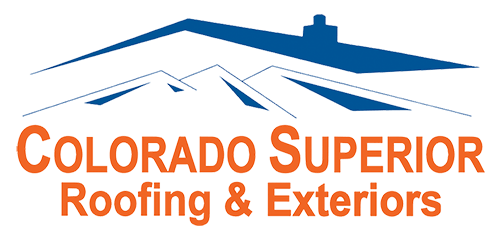A new roof system is a big investment. Here at Colorado Superior Roofing, we know that most things don’t last forever and even the sturdiest of roofs will eventually need repair or replacement. Your Littleton roofers can help you choose the roof that will be the most worthwhile for your home or business, but here’s some tips to help you get started:
Buying a new roof and getting your money’s worth
Roof system components
All steep-slope roof systems (i.e., roofs with slopes of 25 percent or more) have five basic components
- Roof covering: shingles, tile, slate or metal and underlayment that protect the sheathing from weather.
- Sheathing: boards or sheet material that are fastened to roof rafters to cover a house or building.
- Roof structure: rafters and trusses constructed to support the sheathing.
- Flashing: sheet metal or other material installed into a roof system’s various joints and valleys to prevent water seepage.
- Drainage: a roof system’s design features, such as shape, slope and layout that affect its ability to shed water.
Even roofs have enemies
A roof system’s performance is affected by numerous factors. Knowing about the following will help you make informed roof system buying decisions:
- Sun: Heat and ultraviolet rays cause roofing materials to deteriorate over time. Deterioration can occur faster on the sides facing west or south.
- Rain: When water gets underneath shingles, shakes or other roofing materials, it can work its way to the roof deck and cause the roof structure to rot. Extra moisture encourages mildew and rot elsewhere in a house, including walls, ceilings, insulation and electrical systems.
- Wind: High winds can lift shingles’ edges (or other roofing materials) and force water and debris underneath them. Extremely high winds can cause extensive damage.
- Snow and ice: Melting snow often refreezes at a roof’s overhang where the surface is cooler, forming an ice dam. This blocks proper drainage into the gutter. Water backs up under the shingles (or other roofing materials) and seeps into the interior. During the early melt stages, gutters and downspouts can be the first to fill with ice and be damaged beyond repair or even torn off a house or building.
- Condensation: Condensation can result from the buildup of relatively warm, moisture-laden air. Moisture in a poorly ventilated attic promotes decay of wood sheathing and rafters, possibly destroying a roof structure. Sufficient attic ventilation can be achieved by installing larger or additional vents and will help alleviate problems because the attic air temperature will be closer to the outside air temperature.
Read the full article at everybodyneedsaroof.com






